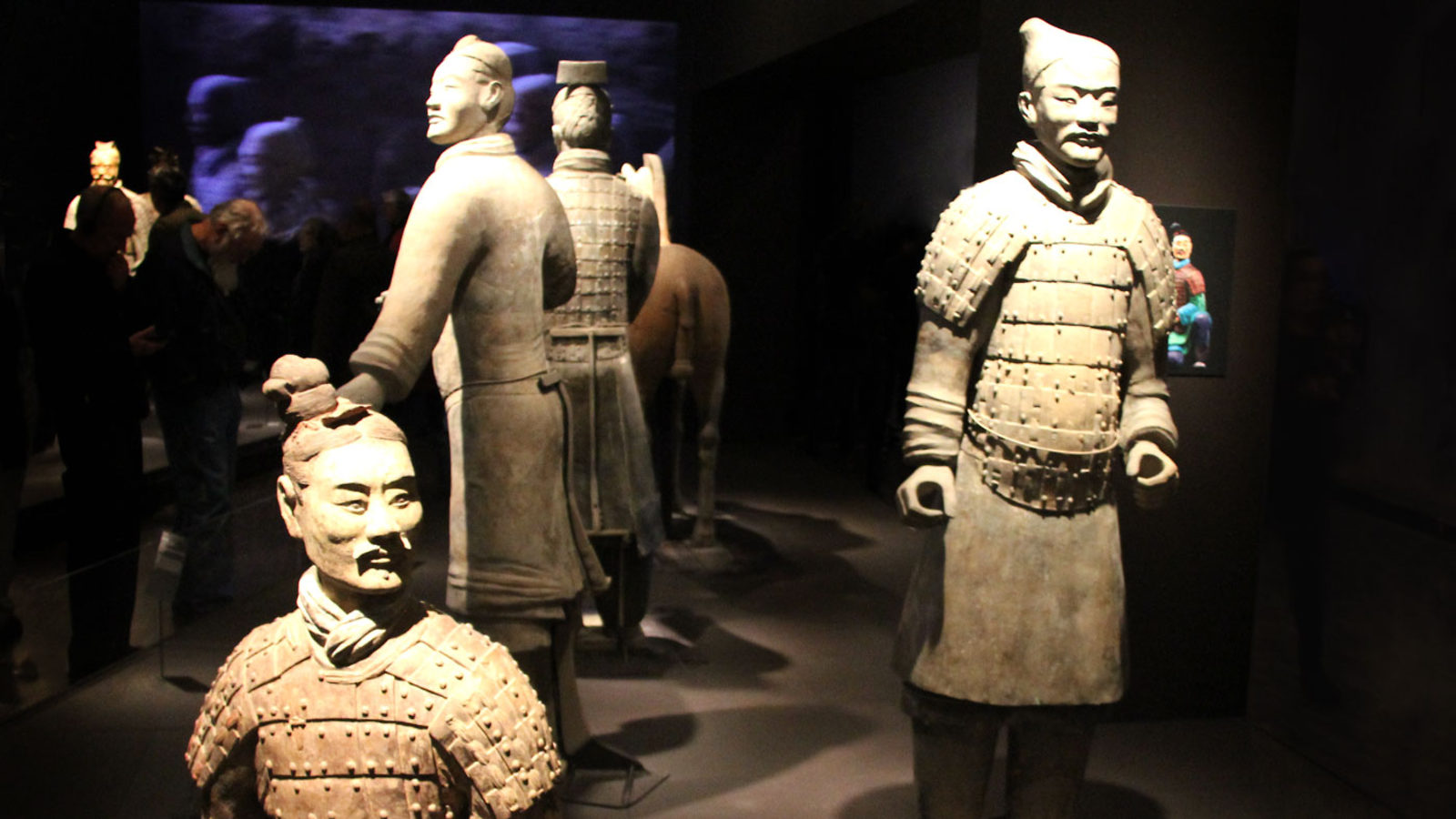In the realm of art and history, the discovery of ancient pigments like Han Blue and Purple paints a vivid picture of the ingenuity and sophistication of ancient Chinese civilization. This blog post delves into the fascinating journey of these pigments, their chemical analysis, and their enduring legacy in art and culture.
 Han Purple on Terracotta Warriors: An image of the Terracotta Army, specifically highlighting the use of Han Purple in the paintwork. This image can showcase the vibrant purple color and its application on the ceramic figures, emphasizing its historical significance and the artistic achievement of the period 12.
Han Purple on Terracotta Warriors: An image of the Terracotta Army, specifically highlighting the use of Han Purple in the paintwork. This image can showcase the vibrant purple color and its application on the ceramic figures, emphasizing its historical significance and the artistic achievement of the period 12.
The Historical Context and Discovery
The article highlights that Han Blue and Purple pigments were first identified in artifacts dating back to the late Western Zhou period (1207–771 BC), the Eastern Zhou period (770–221 BC), and the Qin and Han periods (220–207 BC and 206 BC–220 AD). These pigments were found in various forms, including beads, earrings, and even in the famous Terracotta Army, indicating their widespread use in ancient Chinese art and culture.
Chemical Analysis and Identification:
Raman spectroscopy, a powerful analytical technique, has been instrumental in identifying and characterizing ancient pigments such as Han Blue and Purple. This method involves irradiating a sample with laser light, typically in the visible or near-infrared range, and analyzing the inelastically scattered light to determine the chemical composition of the sample. The technique is particularly adept at identifying microscopic particles in situ, even through transparent coverings, making it invaluable for studying artifacts like ancient pottery and jewelry 4.
In the context of Han Blue and Purple pigments, micro-Raman spectroscopy has been used to analyze powdered samples from artifacts, including those from the Luoyang tombs. The analysis revealed the presence of Chinese Purple (BaCuSi2O6), Chinese Blue (BaCuSi4O10), and Chinese Dark Blue (BaCu2Si2O7) in the samples. The identification of these pigments was achieved by comparing the Raman spectra of the samples with those obtained from earlier investigations. Specific Raman bands were used to reference each pigment, allowing for a precise identification 3.
For instance, Chinese Purple was identified by Raman bands at 990m, 588s, 516m, 459w, 354w, 276w, and 183w cm−1. Similarly, Chinese Blue was referenced by bands at 1102s, 997w, 791w, 562w, 427s, and 383w cm−1, while Chinese Dark Blue was identified by bands at 1014m, 891s, 673s, 607w, 558w, 458v, 355w, and 311w cm−1 3.
This method of analysis not only confirms the presence of these ancient pigments in artifacts but also provides insights into their chemical composition, which is crucial for understanding their historical and cultural significance. The use of micro-Raman spectroscopy in this context underscores the technique's versatility and its role in advancing our understanding of ancient materials and their applications 4.
Through detailed chemical analysis, including Raman spectroscopy, the article confirms the presence of Han Blue and Purple in these artifacts. Han Blue was identified in beads and other decorative objects, while Han Purple was found in the Terracotta Army and other artifacts. The article also discusses the synthetic source of Ultramarine Blue, which could not be definitively proven but was presumed.
Historical Significance and Use:
The article underscores the historical significance of these pigments, noting that Han Blue was initially preferred for ornaments, while Han Purple became more popular around 400 BC. The Terracotta Army, dating back to around 220 BC, was extensively painted with Han Purple, showcasing its importance in ancient Chinese art.
The End of Use and Political Changes
The use of Han Blue and Purple pigments ended with the Han period (220 AD), coinciding with the political fragmentation of the Chinese Empire. This period marked a decline in the production and use of these pigments, possibly due to political changes that halted their dissemination.
Conclusion
The invention and use of Han Blue and Purple pigments in ancient China highlight the importance of these pigments in art, culture, and the development of pigment technology. It underscores the ingenuity of ancient civilizations in creating these pigments from minerals and their chemical transformation, showcasing the human inventive talent and the role of chemistry in human history. Further archaeometric studies may reveal more about the use and significance of these pigments, particularly in the period between 800 BC and 200 AD.